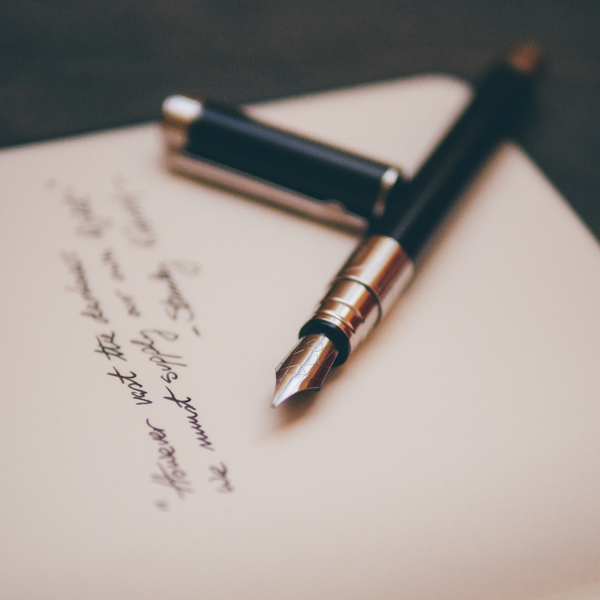Generating ideas is the lifeblood of any writing project, and choosing the right technique can make all the difference.
Enter brainstorming and freewriting, two powerhouse methods designed to ignite your creativity and develop groundbreaking concepts.
While both aim to unleash your inner genius, they differ significantly in their approach and execution.
Dive in to discover how understanding these differences can help you select the most effective technique for your unique writing needs.
Ready to elevate your writing game? Let's get started!
Key Takeaways:
- Brainstorming and freewriting are distinct techniques used to generate ideas during the writing process.
- Brainstorming involves structured group sessions, while freewriting is a solo activity focused on writing without judgment.
- Both methods are valuable for developing concepts and overcoming writer's block.
Brainstorming: Structured Idea Generation
Brainstorming is a method often used in group settings to generate a large number of ideas in a short period.
Participants are encouraged to share whatever comes to mind without worrying about correct grammar or spelling.
The goal is to create a free-flowing environment where ideas can be generated rapidly and without judgment.
This technique is particularly useful for tackling complex problems or developing new concepts.
For example, imagine a team of writers tasked with creating content for a new gardening blog.
During a brainstorming session, participants might shout out topics like "organic gardening," "pest control," or "seasonal planting."
These ideas are then written down and examined later for their potential to be developed into full articles.
Brainstorming forces participants to think outside the box and can lead to unexpected and innovative solutions.
Freewriting: Unleashing Creativity
Freewriting, on the other hand, is a solo activity that involves writing continuously for a set period, usually five minutes or more, without worrying about grammar, spelling, or coherence.
The primary aim is to get words on paper and overcome the internal censoring that often hinders creativity.
This method is particularly helpful for writers who struggle with getting started or who feel stuck on a specific topic.
Imagine a writer sitting down to start an essay on the benefits of playing the piano.
Instead of waiting for the perfect opening sentence, they begin to write whatever comes to mind about the subject.
This practice helps to clear mental blocks and can lead to surprising insights and connections that might not have emerged through more structured methods.
Freewriting is a powerful tool for tapping into the subconscious mind and discovering hidden ideas.
Comparing Techniques: Structure vs. Freedom
One of the main differences between brainstorming and freewriting is the level of structure involved.
Brainstorming is often a collaborative effort that follows a specific format, such as idea mapping or listing.
Participants take turns sharing their thoughts, and a facilitator may guide the session to keep it focused and productive.
This structured approach can be particularly effective for generating a large number of ideas quickly and for ensuring that all participants have a chance to contribute.
In contrast, freewriting is a more free-form technique that allows the writer to explore their thoughts without any constraints.
There are no rules or guidelines to follow, and the writer is free to let their mind wander wherever it wants to go.
This lack of structure can be liberating and can help writers break through creative blocks.
However, it can also be challenging for those who prefer a more organized approach to idea generation.
Applications in Different Contexts
Brainstorming and freewriting can be applied in various contexts, depending on the writer's goals and preferences.
For instance, brainstorming is often used in professional settings where collaboration and quick idea generation are essential.
Teams working on marketing campaigns, product development, or research projects may find brainstorming sessions particularly valuable for pooling their collective knowledge and creativity.
On the other hand, freewriting is often used by individual writers who need to overcome writer's block or who want to explore their thoughts on a particular subject.
This technique can be especially useful for personal writing projects, such as journaling, creative writing, or essay writing.
By allowing the writer to write without judgment, freewriting can help to uncover new ideas and perspectives that might not have been discovered through more structured methods.
Benefits and Drawbacks
Both brainstorming and freewriting have their own unique benefits and drawbacks.
Brainstorming's structured approach can lead to a large number of ideas in a short amount of time, making it an efficient method for idea generation.
However, the collaborative nature of brainstorming can sometimes lead to groupthink, where participants conform to the dominant ideas rather than thinking independently.
Freewriting, on the other hand, allows for complete freedom of thought and can help writers tap into their subconscious mind.
This technique can be particularly effective for overcoming writer's block and for generating unique and original ideas.
However, the lack of structure can also be a drawback, as it may lead to a disorganized and incoherent stream of thoughts that require significant editing and refinement.
Practical Examples
To illustrate the differences between brainstorming and freewriting, consider the following examples.
In a brainstorming session for a new marketing campaign, a team might use idea mapping to explore different themes and strategies.
They might start with a central concept, such as "sustainability," and then branch out into related ideas like "eco-friendly products," "recycling programs," and "green energy."
This structured approach helps to organize the team's thoughts and ensures that all relevant ideas are considered.
In contrast, a writer working on a novel might use freewriting to explore a character's backstory.
They might set a timer for ten minutes and write whatever comes to mind about the character's childhood, relationships, and motivations.
This free-form approach allows the writer to delve deeply into the character's psyche and uncover details that might not have emerged through more structured methods.
Choosing the Right Technique
When deciding between brainstorming and freewriting, it's important to consider the specific needs and goals of the writing project.
For collaborative projects that require quick idea generation and input from multiple participants, brainstorming is often the best choice.
This technique can help to pool collective knowledge and creativity, leading to a diverse range of ideas and solutions.
For individual writing projects that require deep exploration and original thinking, freewriting can be a more effective technique.
By allowing the writer to write without judgment, freewriting can help to uncover hidden ideas and perspectives that might not have been discovered through more structured methods.
Ultimately, the choice between brainstorming and freewriting depends on the writer's preferences and the specific requirements of the project.
Unleash Your Creative Potential: Choose Your Path Wisely
In the quest for creativity, understanding the nuances between brainstorming and freewriting can be your secret weapon.
Whether you thrive in collaborative environments or prefer the solitude of freewriting, each technique offers unique advantages tailored to different writing scenarios.
Brainstorming involves structured group sessions that encourage rapid idea generation without judgment, making it ideal for collaborative projects.
Freewriting, on the other hand, is a solo activity that allows writers to explore their thoughts without worrying about grammar, spelling, or coherence, making it particularly useful for overcoming writer's block and generating original ideas.
By mastering both methods, you can effortlessly switch gears to overcome writer's block, generate groundbreaking ideas, and elevate your writing projects to new heights.
So, which path will you choose to unleash your creative potential? The decision is yours!
Writing FAQs
Are you ready to unlock the secrets of effective writing techniques?
Whether you're a seasoned writer or just starting out, understanding the nuances of different writing strategies can make a world of difference.
In this FAQ section, we dive into the fascinating world of brainstorming and freewriting, two powerful tools that can help you overcome writer's block, generate innovative ideas, and enhance your collaborative projects.
Let's explore the main differences between these techniques, how they can boost your creativity, and which one is best suited for your writing needs.
Ready to get inspired? Let's go!
What is the main difference between brainstorming and freewriting?
The main difference between brainstorming and freewriting lies in their approach and execution. Brainstorming is a structured, collaborative technique used to generate a large number of ideas quickly, often in a group setting. Freewriting, on the other hand, is a solo activity that involves writing continuously without worrying about grammar, spelling, or coherence, allowing for complete freedom of thought.
How can brainstorming and freewriting help overcome writer's block?
Both brainstorming and freewriting can be effective tools for overcoming writer's block. Brainstorming encourages rapid idea generation without judgment, which can help to break through mental barriers and spark new ideas. Freewriting allows writers to write without censoring themselves, helping to clear mental blocks and uncover hidden thoughts and ideas.
Which technique is better for collaborative projects?
For collaborative projects, brainstorming is often the better choice. This structured technique allows multiple participants to share their ideas and build on each other's thoughts, leading to a diverse range of ideas and solutions. Freewriting, being a solo activity, is more suited to individual writing projects that require deep exploration and original thinking.
Ready to start exploring the realm of writing and brainstorming? Check out Easy English Learning's video!
Want even more content about creativity and art?
Be sure to check out all of our creative chronicles!
Love writing and considering creating your own written masterpieces?
Check out some of our other articles:
-How do I start basic writing?
-How do I write a short story?
-What is a 100 word story called?







